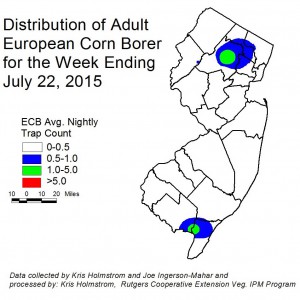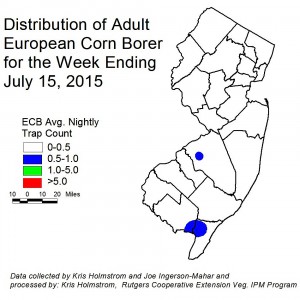Sweet Corn
European corn borer (ECB) adult activity is starting to increase in parts of the state now. This is the beginning of the second adult flight. Areas of highest activity are currently along the Delaware Bay Shore and in central Morris County (see ECB map), but areas between should fill in over the next week.
As always, consider treating when the number of infested plants in a 50 plant sample exceeds 12%. Any planting remaining at or above threshold as it proceeds to full tassel should be treated, as this is the last stage at which ECB larvae will be exposed and vulnerable to insecticidal sprays.
See the 2015 Commercial Vegetable Recommendations Guide for insecticide choices.
[Read more…]



